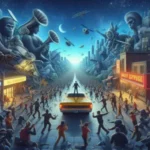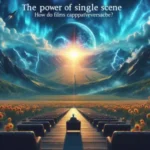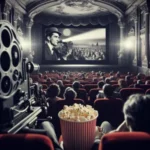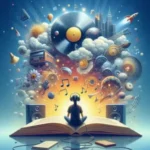Music possesses a unique ability to evoke emotions, shaping our experiences and memories in profound ways.
In the realm of film, the soundtrack transcends mere background noise to become a vital character in its own right, weaving through the narrative and amplifying the emotional landscape of the story. From the haunting strains of a solo violin that heighten moments of vulnerability to the triumphant crescendo of a full orchestra celebrating victory, the right music can transform a scene, pulling audiences deeper into the characters’ journeys. In this blog post, we will delve into the intricate relationship between music and storytelling in film, exploring how composers and filmmakers harness the power of sound to create unforgettable emotional experiences. Join us as we unveil the secrets behind iconic scores, dissect memorable scenes, and discover how the soundtrack of emotion shapes our connection to the silver screen.
1. Introduction: The Relationship Between Music and Emotion in Film
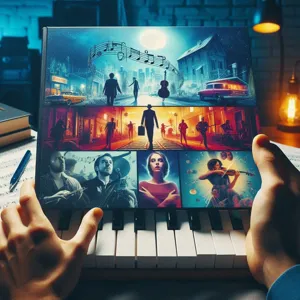
Music has an unparalleled ability to evoke emotions, and its role in film storytelling is both profound and multifaceted. From the stirring crescendos that accompany a hero’s triumph to the haunting melodies that underscore moments of despair, the relationship between music and emotion in film is a dynamic interplay that shapes the audience’s experience and deepens their connection to the narrative.
Imagine watching a scene where a character faces a pivotal moment; the absence of a musical score can leave the moment feeling flat, while the right piece of music can elevate it to a transformative experience. Composers meticulously craft soundtracks that not only reflect the mood of a scene but also anticipate and guide the audience’s emotional responses. The swelling strings, the pounding percussion, and the delicate piano notes all serve as cues, urging viewers to feel joy, sorrow, tension, or relief.
Moreover, music in film serves as a language of its own, transcending verbal communication to tap into the subconscious. It can evoke nostalgia, create tension, or provide relief, often without the audience even realizing it. The use of leitmotifs—recurring musical themes associated with particular characters or ideas—further enhances this emotional depth, allowing viewers to form connections that resonate long after the credits roll.
In this exploration of the intricate relationship between music and emotion in film, we will delve into how soundtracks are crafted, analyze iconic scores that have left indelible marks on cinema, and uncover the psychological principles behind why music elicits such powerful feelings. Join us as we journey through the soundscapes that amplify storytelling, revealing the hidden threads that weave music into the very fabric of film.
2. The Psychology of Music in Film: How Soundtracks Influence Viewer Perception
The interplay between music and film is a dance as old as cinema itself, one that moves audiences in profound and often imperceptible ways. At its core, the psychology of music in film lies in its ability to evoke emotions, shape narrative arcs, and enhance the overall viewer experience. From the haunting strings that accompany a tense moment to the soaring crescendos that signal triumph, soundtracks serve as an emotional backbone, guiding the audience’s reactions and interpretations.
Research shows that music can significantly influence our perception of a scene, often before we consciously register what we are feeling. A minor key can imbue a moment with sadness or foreboding, while a major key can evoke joy and hope. This power is not merely coincidental; it taps into our brain’s wiring, where emotions and memories are intricately linked to the sounds we hear. For instance, the iconic theme of “Jaws,” a simple two-note motif, builds an immediate sense of dread, priming viewers for the impending terror lurking beneath the waves. Similarly, the swelling orchestral pieces in “Star Wars” evoke an epic sense of adventure, transporting audiences to galaxies far away.
Moreover, soundtracks can reinforce character development and narrative progression. A character’s theme—be it a gentle piano melody or a frenetic electronic beat—can encapsulate their emotional journey, allowing viewers to connect with them on a deeper level. As the character evolves, so too can the music, mirroring their internal struggles and triumphs. Additionally, the strategic use of silence can be just as powerful. Pauses in the score can create tension, inviting viewers to lean in closer, while the abrupt absence of music can heighten the emotional impact of a pivotal scene.
In essence, the psychology of music in film is a nuanced art that extends beyond mere background noise; it is a vital storytelling tool. By understanding how soundtracks influence viewer perception, filmmakers can craft richer, more immersive experiences that resonate long after the credits roll. Whether it’s a heart-wrenching ballad or a pulse-pounding orchestral score, the right music has the potential to transform a scene, ignite emotions, and create unforgettable cinematic moments.
3. Historical Evolution of Film Scores: From Silent Films to Modern Soundtracks
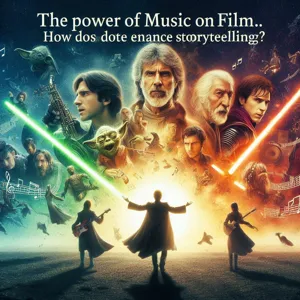
The journey of film scoring is a fascinating tale of innovation, creativity, and the profound impact of music on storytelling. In the early days of cinema, specifically during the silent film era, music played a pivotal role in conveying emotion and setting the tone for the narrative. Imagine a dimly lit theater where the audience sits in rapt attention, their eyes glued to the screen. Accompanied only by live musicians—often a lone pianist or a small ensemble—the visual storytelling relied heavily on musical cues to evoke laughter, fear, romance, or suspense. The music was not merely background noise; it was an essential partner in the storytelling process, guiding the audience through the emotional landscape of the film.
As technology advanced and sound was introduced in the late 1920s, the landscape of film scoring underwent a dramatic transformation. The synchronized sound revolution gave rise to the “talkies,” allowing composers to create more intricate scores that complemented dialogue and sound effects. Iconic composers like Max Steiner and Erich Wolfgang Korngold began to emerge, crafting lush orchestral pieces that became synonymous with the films they adorned. Steiner’s score for “Gone with the Wind” and Korngold’s work in “The Adventures of Robin Hood” showcased the potential of film scores to enhance narratives, creating a deeper connection between the audience and the characters on screen.
As we moved into the mid-20th century, composers like Bernard Herrmann and Ennio Morricone further expanded the boundaries of film scoring. Herrmann’s chilling score for Hitchcock’s “Psycho” utilized shrieking strings to evoke tension, while Morricone’s innovative use of unconventional instruments in “The Good, the Bad and the Ugly” helped define the sound of the Spaghetti Western genre. The late 20th and early 21st centuries saw the rise of electronic music and experimental soundscapes, with composers like Hans Zimmer and Danny Elfman blending orchestral and digital elements to create unique auditory experiences.
Today, film scores are more diverse than ever, reflecting the complexities of modern storytelling. Whether it’s the sweeping orchestration of a blockbuster, the minimalist piano melodies of an indie film, or the eclectic sounds of a documentary, music continues to play an integral role in shaping the emotional heartbeat of cinema. As we delve deeper into the art of film scoring, we uncover not just the evolution of notes and rhythms, but the ever-changing relationship between music, emotion, and the stories that captivate our hearts and minds.
4. Iconic Film Composers and Their Impact on Storytelling
When we think of iconic film scores, certain names immediately come to mind—composers whose melodies have not only defined the cinematic landscape but have also left an indelible mark on our emotional experiences. These musical maestros are the unsung heroes behind the scenes, crafting soundscapes that elevate storytelling to unprecedented heights.
Take John Williams, for instance. His sweeping scores for films like *Star Wars* and *Jurassic Park* have become synonymous with the very essence of adventure and wonder. The triumphant brass and soaring strings of the *Star Wars* theme not only set the stage for an epic space saga but also invoke a sense of nostalgia and excitement that resonates with audiences of all ages. Williams has an uncanny ability to translate the emotional core of a narrative into an auditory experience, guiding viewers through moments of tension, triumph, and heartache.
Similarly, Hans Zimmer has revolutionized film music with his innovative techniques and powerful compositions. His work on *Inception* exemplifies how music can shape the perception of time, using pulsating rhythms and haunting motifs to immerse viewers in a world where reality bends and shifts. Zimmer’s collaboration with director Christopher Nolan has resulted in soundtracks that are as integral to the storytelling as the dialogue itself, creating a multisensory experience that lingers long after the credits roll.
Then there’s Ennio Morricone, whose work in spaghetti westerns like *The Good, The Bad and The Ugly* introduced a distinct sound that transformed the genre. His ability to evoke mood and atmosphere through unconventional instrumentation redefined how music could serve the visual medium. The mournful whistling and striking guitar riffs of Morricone’s scores have become iconic, illustrating the profound connection between sound and storytelling.
These composers don’t just create background music; they weave intricate emotional tapestries that enhance the narrative, making pivotal scenes more poignant, thrilling, or heartwarming. Their ability to elicit visceral responses from audiences is a testament to the profound impact of music in film. As we delve deeper into the world of cinema, it becomes increasingly clear that the right score can turn a good film into a great one, making the work of these iconic composers essential to the art of storytelling.
5. The Use of Leitmotifs: Creating Musical Themes for Characters

Leitmotifs are a powerful tool in film storytelling, serving as musical signatures that resonate with audiences on a deeply emotional level. This technique, popularized by composers like Richard Wagner and later adapted by modern filmmakers, involves assigning specific musical themes to characters, ideas, or emotions throughout a film. Each time a character appears on screen, their leitmotif plays, evoking immediate recognition and a deeper connection to their journey.
Consider the hauntingly beautiful theme associated with Darth Vader in “Star Wars.” The ominous strains of the Imperial March not only herald his presence but encapsulate the essence of his character—powerful, menacing, and tragic. This repetition of a musical motif reinforces the audience’s understanding of the character’s complexity, transforming mere visuals into a rich tapestry of sound and emotion.
Leitmotifs can also evolve throughout a film, mirroring character development and emotional arcs. For instance, in “The Lord of the Rings,” Frodo’s theme shifts from a light, hopeful melody to a darker, more somber tune as he bears the weight of the One Ring. This shift signals his internal struggle and growth, allowing the audience to feel his burden and triumph in a profound way.
By using leitmotifs, filmmakers create a musical language that enhances storytelling, making characters and themes more memorable. The recurring melodies serve not just as background music but as integral narrative devices that guide the emotional journey of the audience. As viewers, we are not just passively watching the story unfold; we are invited to experience it on a visceral level, with the music weaving through the fabric of the film, enriching our understanding and emotional response to the characters and their journeys.
6. Emotional Arcs: How Music Enhances Character Development
In the realm of film storytelling, music serves as an invisible thread that weaves through the emotional fabric of a narrative, enhancing character development in profound ways. Each character’s journey is not just a series of events; it is an emotional arc that invites the audience into their psyche. The strategic use of music can elevate these arcs, providing depth and resonance that words alone may fail to convey.
Consider the gradual transformation of a character from despair to hope. As they navigate their struggles, the score often mirrors their emotional state, shifting from somber, slow melodies to uplifting, fast-paced rhythms. This sonic evolution not only underscores their internal battles but also instills a sense of empathy within the audience. When a character faces a pivotal moment—be it a heart-wrenching loss or a triumphant victory—carefully crafted music enhances the weight of the scene, allowing viewers to experience the character’s emotions more viscerally.
For example, think of the iconic use of music in films like “The Lion King.” As Simba grapples with his past, the haunting notes of “Remember Me” evoke feelings of loss and nostalgia, drawing the audience closer to his emotional plight. Conversely, during moments of realization and acceptance, the score shifts to more hopeful tones, signaling his growth and the promise of redemption. This interplay between music and character development not only enriches the narrative but also leaves an indelible mark on the viewer’s heart.
Moreover, motifs associated with specific characters can create an emotional shorthand that resonates throughout the film. When a familiar theme plays, it can elicit immediate recognition and emotional response, reminding the audience of the character’s journey, struggles, and triumphs. This technique deepens the connection between the character and the viewer, making each emotional beat feel more impactful.
In essence, music in film is not merely a backdrop; it is a crucial element that shapes and enhances character development. By skillfully integrating musical elements into storytelling, filmmakers can create a rich, immersive experience that resonates with audiences long after the credits roll. The soundtrack of a film does more than accompany the visuals—it becomes a powerful storyteller in its own right, guiding us through the emotional landscapes of the characters we come to love and understand.
7. Case Studies: Analyzing Memorable Film Soundtracks (e.g., “Star Wars,” “Inception,” “Titanic”)
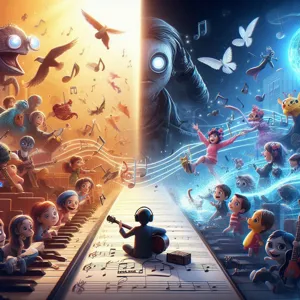
In the realm of storytelling, few elements wield as much emotional power as a film’s soundtrack. To illustrate this profound impact, we can delve into case studies of some of the most memorable soundtracks in cinematic history, such as “Star Wars,” “Inception,” and “Titanic.” Each of these films has employed music not just as an accompaniment, but as a vital character that enhances the narrative and deepens the audience’s emotional experience.
**”Star Wars”** is perhaps the most iconic example of this phenomenon. Composed by John Williams, the score is a masterclass in thematic storytelling. The heroic “Main Title” theme instantly evokes feelings of adventure and courage, setting the stage for an epic saga. Williams brilliantly crafts motifs that represent specific characters and ideas — like the ominous “Imperial March,” which encapsulates Darth Vader’s menace and the looming threat of the Empire. These musical cues do more than accompany the visuals; they become inseparable from the characters’ journeys, allowing audiences to connect with their struggles and triumphs on a deeper level.
Moving to **”Inception,”** Hans Zimmer’s score serves as an intricate soundscape that mirrors the film’s complex narrative structure. The use of a slowed-down version of Édith Piaf’s “Non, Je ne regrette rien” acts as a poignant motif throughout the film, seamlessly intertwining the themes of memory, time, and reality. Zimmer’s pulsating rhythms and haunting melodies build tension and intrigue, guiding viewers through the labyrinth of dreams and subconscious exploration. The music not only heightens the emotional stakes but also reinforces the film’s central concepts, making the experience all the more immersive.
Finally, **”Titanic”** showcases how music can encapsulate love and loss in a sweeping historical epic. James Horner’s score, particularly the hauntingly beautiful “My Heart Will Go On” performed by Celine Dion, transcends the film itself to become a cultural touchstone. The melody evokes an immediate sense of nostalgia and longing, capturing the essence of Jack and Rose’s tragic romance. Horner’s orchestration — from the sweeping strings to the poignant woodwinds — underscores the film’s emotional highs and lows, making every moment feel more poignant and unforgettable.
These case studies reveal that film soundtracks are not merely background noise; they are essential storytelling tools that enrich the narrative and deepen emotional resonance. By analyzing how composers like John Williams, Hans Zimmer, and James Horner have crafted their scores, we can appreciate the artistry that goes into making music a powerful ally in the cinematic experience. As we journey through each film’s soundscape, we are reminded that music has the unparalleled ability to evoke feelings, shape perceptions, and ultimately, tell stories that linger in our hearts long after the credits roll.
8. The Role of Diegetic vs. Non-Diegetic Music in Narrative Techniques
In the realm of film storytelling, the distinction between diegetic and non-diegetic music plays a crucial role in shaping the audience’s emotional experience and enhancing narrative depth. Diegetic music refers to sound that emanates from the film’s world—music that characters can hear and interact with. This could be a song playing on a car radio, a live band performing at a scene, or even the gentle strumming of a character’s guitar. This type of music serves to ground the viewer in the reality of the film, creating a sense of authenticity and connection. When characters engage with the music, it can serve to develop their personalities or advance the plot, making the audience feel as though they are part of the story.
On the other hand, non-diegetic music exists outside the narrative world, serving solely to enhance the emotional tone and guide the audience’s reactions. This includes orchestral scores that swell during pivotal moments, underscoring the tension of a climactic scene or evoking nostalgia during a poignant flashback. Non-diegetic music functions as an invisible hand, subtly shaping the viewer’s emotional landscape without being acknowledged by the characters themselves.
The interplay between these two types of music is where the true magic happens. For instance, a scene may begin with a diegetic track—perhaps a character’s favorite song playing on a vinyl record—creating a personal connection. As the emotional stakes rise, the transition to a soaring orchestral score can elevate the moment, taking the audience on a journey that reflects not only the characters’ experiences but also their internal struggles.
Directors and composers skillfully manipulate these musical elements to create layers of meaning, allowing the audience to navigate the story’s emotional terrain with greater depth. The juxtaposition of diegetic and non-diegetic music can create moments of tension and release, drawing viewers deeper into the narrative. In this way, filmmakers wield music as a powerful storytelling tool, transforming the auditory experience into an integral part of the cinematic journey.
9. Music as a Narrative Device: Driving Plot and Setting Mood
Music in film transcends mere background noise; it serves as a powerful narrative device that drives the plot forward and shapes the emotional landscape of a story. From the first note to the final crescendo, a film’s score can encapsulate the essence of a scene, guiding the audience’s emotions and reactions in profound ways.
Consider the way a suspenseful score elevates tension during a climactic chase scene. As the tempo quickens and dissonant chords clash, viewers find their hearts racing in sync with the characters’ perilous journey. In contrast, a soft, melodic theme can envelop a tender moment, allowing audiences to revel in the intimacy of a shared glance or a heartfelt confession.
Directors and composers often collaborate closely, crafting music that not only complements the visual elements of the film but also serves as a character in its own right. Think of John Williams’ iconic scores in films like “Star Wars” or “Indiana Jones,” where the music not only signals adventure but also becomes a recognizable part of the characters’ identities.
Moreover, music can seamlessly transition between scenes, creating a cohesive narrative thread that links disparate moments. A recurring motif associated with a specific character or theme can evoke nostalgia or anticipation, reminding the audience of past events while foreshadowing what’s to come.
The setting is equally influenced by music. A sweeping orchestral arrangement can transport viewers to a grand historical epic, while a minimalist electronic score might ground a contemporary story in reality. The right musical choices can enhance the visual storytelling, making the audience feel as if they are not just observers but participants in the unfolding drama.
In essence, music is an invisible hand that shapes every aspect of a film’s storytelling. It enriches the cinematic experience, transforming simple visuals into a layered narrative filled with depth and emotion. As filmmakers continue to explore the synergy between sound and story, the power of music remains a timeless tool in capturing the complexities of the human experience on screen.
10. The Cultural Significance of Music Choices in Film
Music in film is not just an auditory backdrop; it’s a powerful narrative device that can evoke deep emotional responses and reflect cultural nuances. The choices filmmakers make regarding music can amplify themes, enhance character development, and even serve as a commentary on the societal context in which the story unfolds.
Consider the haunting melodies of traditional folk music in a film set in a rural landscape, which can evoke a sense of nostalgia and connection to heritage. Alternatively, the pulsating beats of contemporary pop music in a fast-paced urban drama can encapsulate the vibrancy and chaos of modern life. Each choice of music can transport viewers, grounding them in the film’s cultural setting while simultaneously bridging gaps between viewers’ experiences and the characters’ journeys.
Moreover, music can also serve as a form of cultural representation. For example, the incorporation of indigenous sounds or traditional instruments can honor and showcase specific cultural identities, enriching the storytelling experience. This can create a dialogue about cultural authenticity and representation, allowing audiences to engage with the film on a deeper level.
Consider films like “Black Panther,” where the score merges African rhythms and contemporary orchestration, celebrating the film’s roots while appealing to a global audience. The cultural significance of music choices in such works goes beyond mere entertainment; they can provoke thought, inspire pride, and foster understanding among diverse audiences.
In essence, the music chosen for a film is not just about enhancing the narrative; it is an integral part of the storytelling fabric that reflects and shapes our collective cultural experiences. By understanding the cultural significance of music in film, we can appreciate the profound ways in which it influences our emotional engagement and connection to the story being told.
11. The Impact of Silence: When Less is More in Film Scoring
In the realm of film scoring, silence often speaks louder than the most intricate orchestral compositions. While music is a powerful tool that can evoke a multitude of emotions, there are moments in storytelling where the absence of sound resonates even deeper. This nuanced use of silence can heighten tension, amplify emotional weight, or create a stark contrast that draws the audience further into the narrative.
Think of the heart-stopping moment in a suspense thriller when the music fades, leaving only the sound of a character’s heavy breathing and the distant echoes of their footsteps. This deliberate choice can immerse viewers in a sense of vulnerability and anticipation, making them acutely aware of every detail in the scene. The silence becomes a canvas upon which the audience projects their own fears and expectations.
Moreover, silence can serve as a powerful narrative device, allowing for moments of reflection or introspection. In a poignant drama, a paused score during a character’s moment of realization or grief can evoke a profound connection with the audience, inviting them to experience the depth of emotion alongside the characters. These moments remind us that sometimes, the most compelling storytelling occurs in the spaces between notes, where the mind and heart fill in the gaps with their own interpretations.
Directors and composers who understand the strategic use of silence can craft a more engaging and immersive experience. Iconic films such as “A Quiet Place” and “No Country for Old Men” showcase silence not as a void, but as a deliberate choice that heightens the emotional stakes. It encourages viewers to lean in, listen closely, and become active participants in the unfolding story.
In essence, embracing silence within film scoring magnifies the emotional landscape of a narrative. It challenges the conventional notion that sound must always accompany movement or dialogue, proving that sometimes, less truly is more. By thoughtfully integrating silence into the fabric of storytelling, filmmakers can create moments that linger long after the credits roll, resonating with audiences in ways that music alone cannot achieve.
12. The Collaborations Between Directors and Composers
The relationship between directors and composers is akin to a finely-tuned duet, where each note and frame resonate in a harmonious blend to elevate the storytelling experience. This collaboration is crucial in shaping the emotional landscape of a film, as the right score can amplify a scene’s impact, guiding the audience’s feelings and reactions in ways that dialogue alone cannot.
Take, for instance, the legendary partnership of director Steven Spielberg and composer John Williams. Their collaboration has produced some of cinema’s most iconic scores, from the suspenseful strings of “Jaws” that evoke primal fear to the soaring melodies of “E.T. the Extra-Terrestrial” that capture a sense of wonder and innocence. This synergy allows both creative minds to push boundaries, as directors often rely on composers to interpret their vision through sound, while composers seek to understand the narrative nuances to craft a score that speaks to the heart of the story.
Similarly, the collaboration between director Christopher Nolan and composer Hans Zimmer has redefined modern film scoring. Their work on films like “Inception” and “Dunkirk” showcases how music can create tension and urgency, transforming the viewer’s experience. Zimmer’s innovative use of sound, combined with Nolan’s intricate storytelling, creates a unique auditory landscape that keeps audiences on the edge of their seats.
These collaborations often extend beyond just the technical aspects of scoring. They involve deep discussions about themes, emotions, and the overall tone of the film. The director’s vision and the composer’s musical interpretation coalesce into a powerful force that can evoke tears, laughter, or sheer excitement. When directors and composers work together seamlessly, the result is a film that resonates long after the credits roll, demonstrating that music is not just an accompaniment but an essential element of storytelling that can shape our emotional journey through the cinematic experience.
13. The Future of Music in Film: Trends and Innovations
As we look to the future of music in film, it’s clear that the landscape is evolving at an unprecedented pace, driven by technological advancements and changing audience preferences. One of the most exciting trends is the rise of adaptive and interactive soundtracks. With developments in virtual reality (VR) and augmented reality (AR), filmmakers are now able to create immersive experiences where the music responds dynamically to the viewer’s actions or choices. Imagine a film where the score adapts in real time to the emotional state of the audience or shifts seamlessly based on the path a viewer chooses to take within a VR environment. This personalized approach to sound could redefine how we experience storytelling on screen.
Another trend gaining traction is the integration of artificial intelligence (AI) in music composition. AI algorithms are now capable of analyzing vast amounts of data from existing soundtracks, learning from emotional cues, and even creating original scores that resonate with specific scenes or themes. While this technology raises questions about creativity and authorship, it also presents new opportunities for filmmakers to collaborate with AI musicians, resulting in innovative soundscapes that push the boundaries of traditional scoring.
Moreover, the resurgence of vinyl and analog sound is making its way back into the film industry. Filmmakers are increasingly recognizing the unique warmth and depth that analog recordings can bring to their projects, offering a nostalgic touch that digital formats often lack. This trend not only enhances the auditory experience but also connects audiences to the tactile nature of music, evoking a sense of authenticity and emotional resonance.
Finally, the role of music in film marketing is evolving, with platforms like TikTok and Instagram enabling filmmakers to leverage catchy sound bites and memorable scores to create viral moments. These snippets can amplify a film’s reach, drawing in audiences who may not have otherwise engaged with traditional promotional methods. As social media continues to shape how films are marketed and consumed, the synergy between music and film will only deepen, creating a richer tapestry of storytelling that resonates with audiences on multiple levels.
In this ever-changing landscape, the future of music in film promises to be as vibrant and diverse as the stories themselves, opening up new avenues for creativity and emotional connection. As filmmakers embrace these trends and innovations, we can expect to see soundtracks that not only complement narratives but also drive them, ultimately transforming the way we experience cinema.
14. How to Analyze Music in Film: A Practical Guide for Viewers
Analyzing music in film is not just an exercise for the academically inclined; it’s a rewarding practice that can deepen your appreciation for the storytelling craft. To embark on this journey, start by actively listening to the score during pivotal scenes. Pay attention to how the music complements the visuals—does it heighten the tension during a chase, or does it soften the emotional blow during a dramatic moment?
Next, consider the instrumentation. Is a solo piano creating an intimate atmosphere, or are sweeping orchestral strings evoking grandeur? Each instrument has its own emotional connotation, and recognizing these can unlock layers of meaning.
Take note of recurring motifs. Many filmmakers use specific musical themes to represent characters or ideas, creating a sonic signature that resonates throughout the film. For example, think of how John Williams’ iconic “Imperial March” instantly conveys the presence of Darth Vader in the Star Wars saga.
Also, explore the relationship between diegetic and non-diegetic music. Diegetic sound comes from a source within the film’s world, like a character playing a radio, while non-diegetic music enhances the narrative from outside that world, shaping the audience’s emotional response. Understanding this distinction can reveal how music guides your perception of events.
Finally, reflect on the emotional arc of the film and how the score supports it. Does the music shift to match the character development or plot twists? By keeping these elements in mind, you can begin to decode the intricate tapestry woven by composers and directors, transforming your viewing experience from passive consumption to active engagement.
As you practice these techniques, you’ll find that music is not merely an accompaniment but a powerful narrative force that can elevate the film’s emotional impact, leaving a lasting impression long after the credits roll.
15. Conclusion: The Lasting Legacy of Music in Cinematic Storytelling
In conclusion, the influence of music in cinematic storytelling is profound and undeniable. Throughout the history of film, music has served not just as an accompaniment but as a powerful narrative device that shapes characters, enhances emotional depth, and enriches the audience’s experience. The right score can elevate a scene from mere visuals to an unforgettable moment that lingers long after the credits roll, creating an emotional resonance that words alone often cannot convey.
From the haunting strings of a suspenseful thriller to the jubilant melodies of a romantic comedy, music operates on a level that transcends cultural and linguistic barriers, tapping into the universal human experience. It is a language of its own, able to evoke feelings of joy, sadness, fear, and nostalgia, weaving seamlessly into the fabric of storytelling.
As filmmakers continue to explore innovative ways to integrate soundtracks into their narratives, the legacy of music in film will only grow, inspiring new generations of storytellers and audiences alike. Whether it’s through the iconic themes of classic films or the fresh sounds of contemporary scores, music remains an indelible part of the cinematic journey—a powerful tool that not only supports the narrative but also enhances our emotional connection to the stories being told. As we close this exploration, let us celebrate the artistry of composers and the vital role music plays in shaping our cinematic experiences, ensuring that every film we watch is not just seen, but felt.
As we conclude our exploration of the profound impact music has on film storytelling, it’s clear that the soundtrack serves as an emotional bridge connecting the audience to the narrative. From the haunting melodies that evoke nostalgia to the pulsating rhythms that heighten tension, music shapes our viewing experience in ways that words alone cannot. It enhances character development, amplifies pivotal moments, and ultimately leaves a lasting impression long after the credits roll. As you embark on your next cinematic adventure, take a moment to listen closely to the score; you might just discover a new layer of meaning that resonates with your own emotions. Embrace the magic of music in film, and let it guide you through the rich tapestry of storytelling that unfolds on screen. Thank you for joining us on this journey, and may your future film experiences be enriched by the powerful harmony between sound and story.

